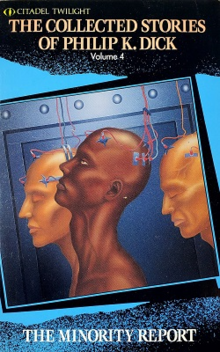
In Fighting Crime Where the Criminals Are, NY Times Op-Ed contributor Heather Mac Donald justifies NYC’s stop-and-frisk policy in a manner that reminds me of the Philip K Dick story, The Minority Report, in which Precrime can predict and prevent crime before it happens. But instead of using a handful of “Precog” mutants who see the future, the real NYPD takes more of a brute force approach – literally.
CompStat embodies the iconoclastic idea that the police can stop violence before it happens. The department analyzes victim reports daily, and deploys additional manpower to the places where crime is increasing. Once at a crime hot spot, officers are expected to look out for, and respond to, suspicious behavior.
Such stops happen more frequently in minority neighborhoods because that is where the vast majority of violent crime occurs — and thus where police presence is most intense. Based on reports filed by victims, blacks committed 66 percent of all violent crime in New York in 2009, including 80 percent of shootings and 71 percent of robberies. Blacks and Hispanics together accounted for 98 percent of reported gun assaults. And the vast majority of the victims of violent crime were also members of minority groups.
…Just because a stop does not result in an arrest or summons does not mean that it did not interrupt a crime. Someone who is casing a victim or acting as a lookout may not have inculpatory evidence on him on which to base an arrest.
That’s a very useful defense. Imagine saying, “Just because I shot a man instead of tazing him, doesn’t mean he wasn’t going to commit a crime later,” and getting away with it.
In a letter to the editors, Donna Lieberman, Executive Director of the New York Civil Liberties Union responds:
Last year, N.Y.P.D. officers stopped New Yorkers 575,000 times. A gun — the ostensible reason for the stop-and-frisk regime — was found in slightly more than 0.1 percent of those stops. That is an unbelievably poor yield rate for such an intrusive, wasteful and humiliating police action.
I agree with Ms. Mac Donald that vulnerable communities need better police protection — but a policy that is both ineffective and hurts the long-term relationship between the police and the community is not the way to provide that protection.
So what is the big deal to the majority if the police hassle residents of big city, minority neighborhoods? It’s the same deal as when authorities hassle minority gun owners in big city, minority neighborhoods. It simply provides a precedent to do it to any other group with little political influence. No one can predict when the worm will turn on them.



